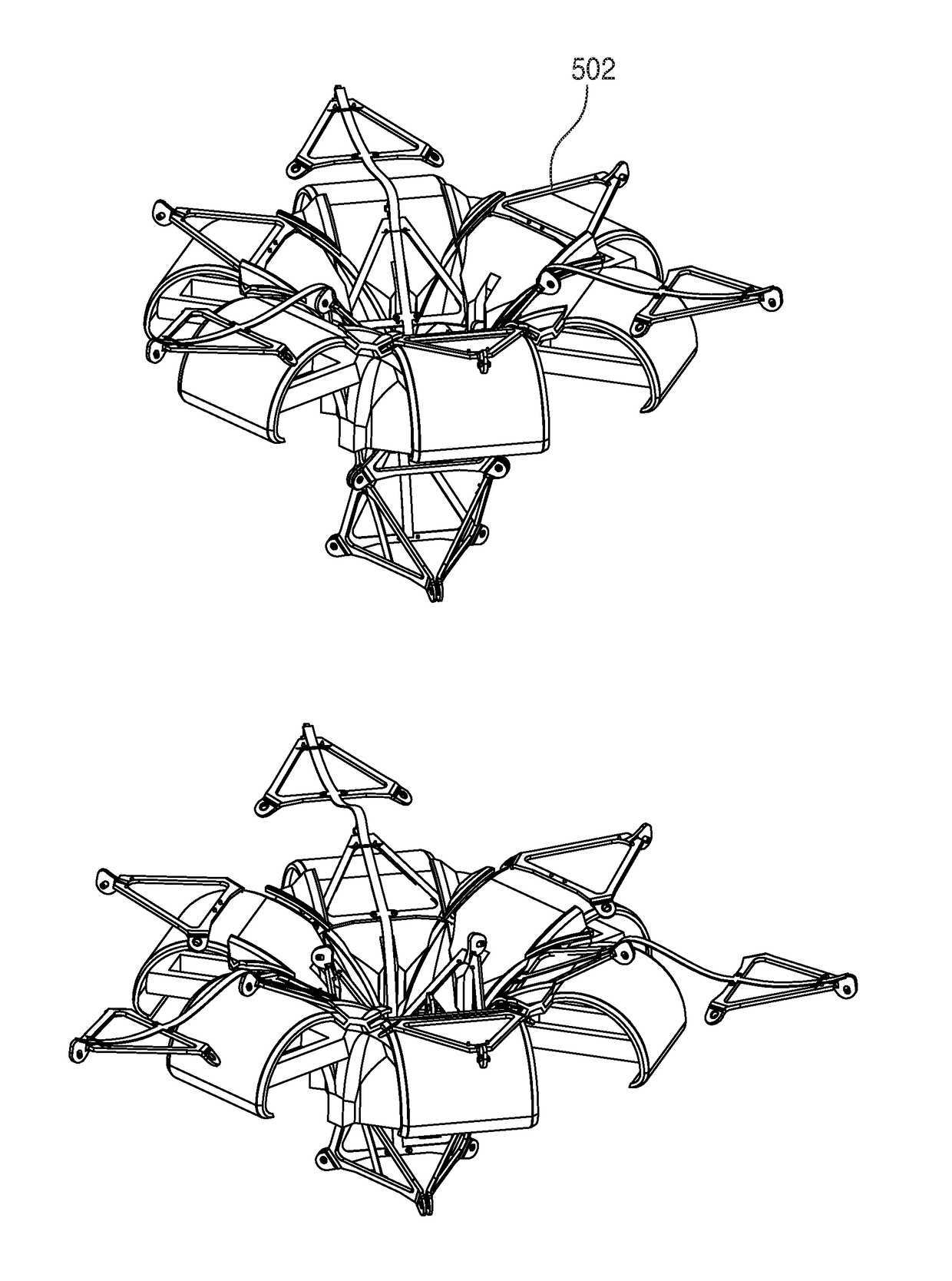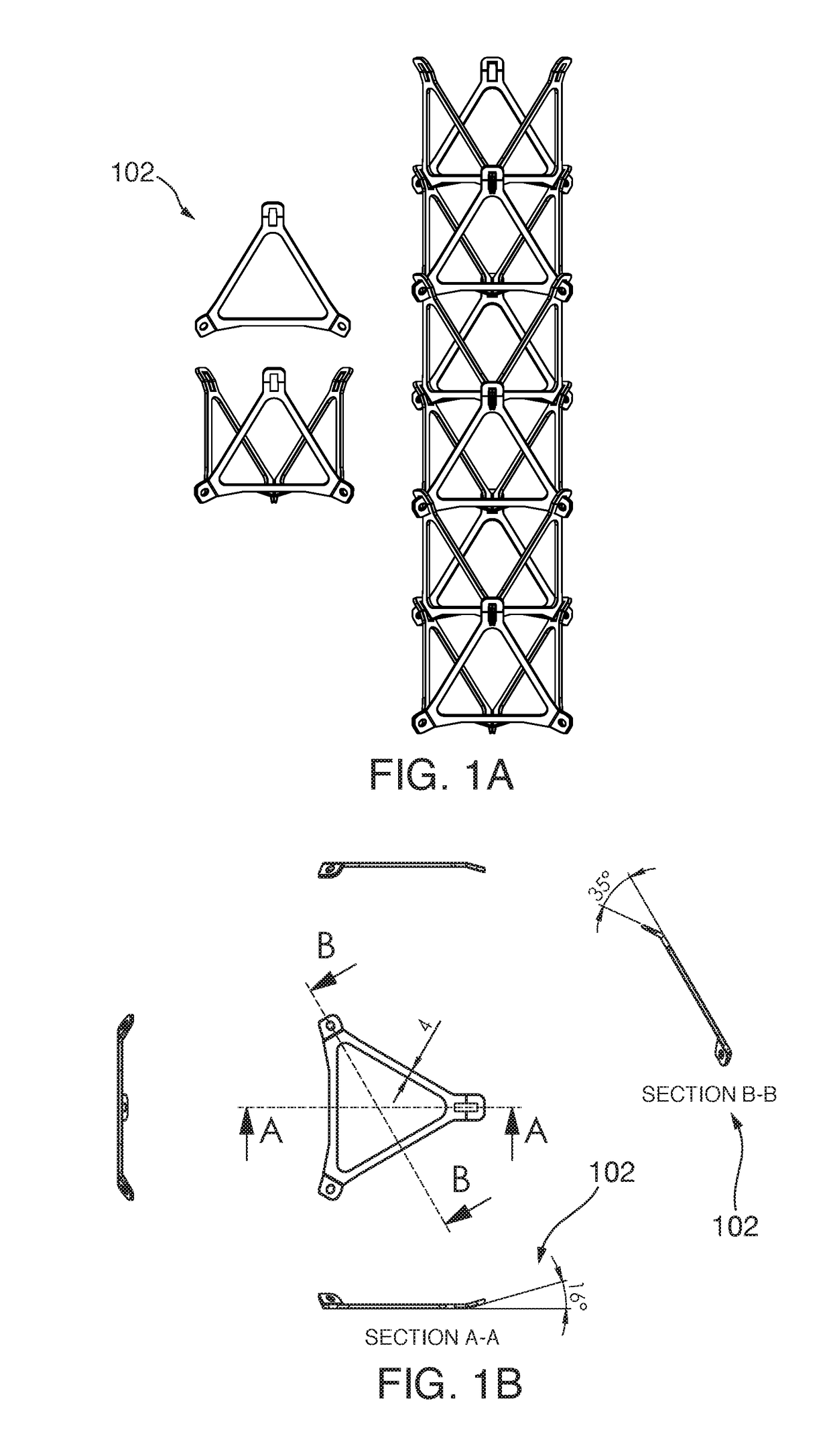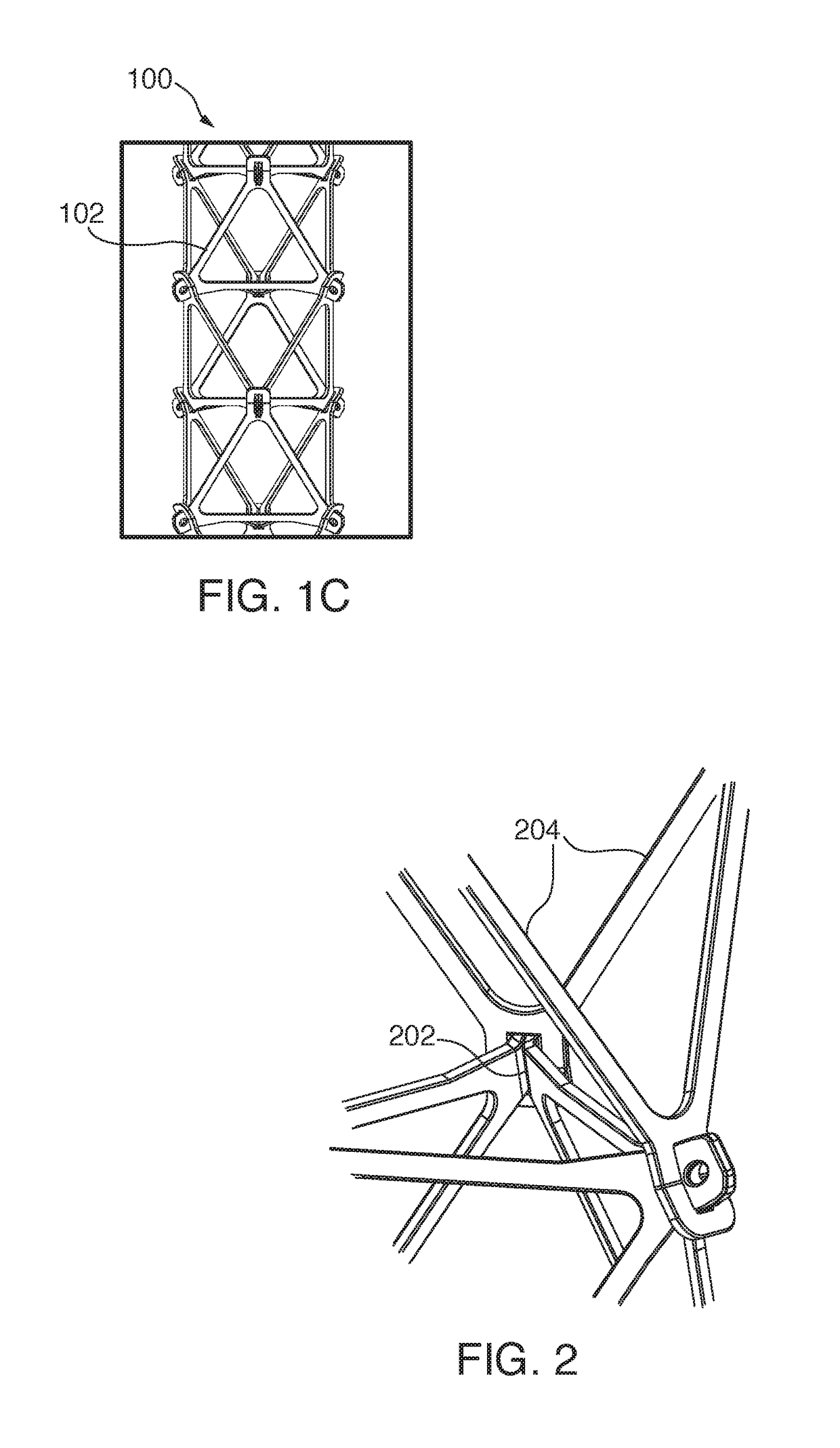Digital Material Assembly By Passive Means And Modular Isotropic Lattice Extruder System (MILES)
a technology of digital material and extruder, which is applied in the direction of girders, manufacturing tools, transportation and packaging, etc., can solve the problems of volumetric structure, process reversibility, and inability to scale beyond the printing machin
- Summary
- Abstract
- Description
- Claims
- Application Information
AI Technical Summary
Benefits of technology
Problems solved by technology
Method used
Image
Examples
Embodiment Construction
[0034]FIG. 1A shows tiles 102 in three states: alone, arranged in cells to form a volume, and as cells placed in a column motif. FIG. 1B shows these tiles as interface components 102, isolated pre-assembly. FIG. 9 is another view of interface components shown in FIG. 1B. Note that two vertices (feet) each have a relatively small tab structure, bending out at an angle of sixteen degrees. The third vertex of the triangular tiles as depicted has a larger profile, bending out at thirty-five degrees, with a slot capable of receiving two of the smaller vertices / feet. The two smaller vertices each have apertures for receiving optimal external fasteners (discussed later). FIG. 1C illustrates mechanical testing of column structure 100, made of interface components 102 after assembly. One embodiment of assembled triangles form stacked octahedra—an exactly constrained structural geometry. When the octahedra are assembled face to face, and placed upon the previous cell, only three triangular fa...
PUM
 Login to View More
Login to View More Abstract
Description
Claims
Application Information
 Login to View More
Login to View More - R&D
- Intellectual Property
- Life Sciences
- Materials
- Tech Scout
- Unparalleled Data Quality
- Higher Quality Content
- 60% Fewer Hallucinations
Browse by: Latest US Patents, China's latest patents, Technical Efficacy Thesaurus, Application Domain, Technology Topic, Popular Technical Reports.
© 2025 PatSnap. All rights reserved.Legal|Privacy policy|Modern Slavery Act Transparency Statement|Sitemap|About US| Contact US: help@patsnap.com



